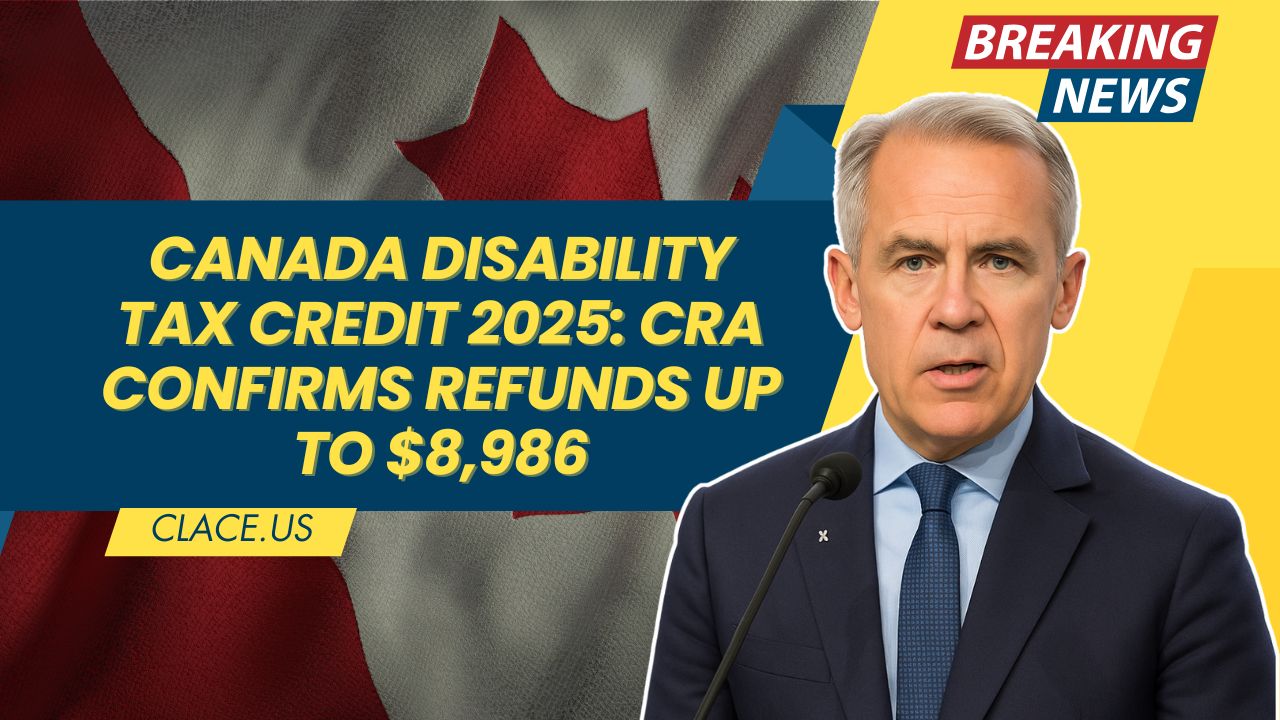Canada Disability Tax Credit 2025: CRA Confirms Refunds Up to $8,986
The Disability Tax Credit (DTC) Canada 2025 is a non-refundable tax credit aimed at easing the financial burden for individuals with severe and long-term impairments.
Updated for the 2025 tax year, this program enables eligible Canadians—or their supporting family members—to reduce the amount of income tax they are required to pay.
Administered by the Canada Revenue Agency (CRA), the DTC also acts as a gateway to multiple federal and provincial benefits, making it a vital support system for Canadians living with disabilities.
Refund Amount for 2025
For 2025, the CRA has confirmed that qualifying applicants may receive up to $8,986 in refund value.
This adjustment reflects inflation changes and revised federal guidelines, reinforcing the government’s goal of supporting financial stability for Canadians with disabilities.
Refund Breakdown
| Component | Federal Amount | Provincial (Average) | Total Potential Refund |
|---|---|---|---|
| Base Disability Tax Credit | $9,428 | $5,135 | $14,563 |
| Refundable Portion (If Any) | N/A | N/A | Up to $8,986 (Actual Refund) |
Note: The final refund amount depends on the individual’s taxable income, credits already claimed, and additional provincial programs available.
Eligibility Requirements in 2025
To qualify for the Disability Tax Credit Canada 2025, applicants must meet specific medical and administrative conditions. The criteria include:
- A licensed medical practitioner must certify the impairment.
- The disability must severely restrict daily activities such as speaking, walking, hearing, or personal care.
- The condition must last—or be expected to last—for at least 12 continuous months.
- Applicants must file and receive approval for Form T2201 (Disability Tax Credit Certificate).
Both adults and children may qualify. If the person with the disability has little or no taxable income, a supporting family member can claim the credit on their behalf.
How to Apply for the DTC
The CRA manages the application and approval process. The steps are straightforward:
- Obtain Form T2201.
- Have it completed and signed by a qualified medical practitioner.
- Submit the form online through CRA MyAccount or by mail.
- Await a Notice of Determination from the CRA, confirming approval or requesting further details.
Once approved, the credit can be applied retroactively for up to 10 years, allowing applicants to claim significant refunds.
Why the Disability Tax Credit Matters in 2025
As living costs continue to rise and healthcare needs grow, the DTC remains essential. This financial support helps cover out-of-pocket expenses not typically included in insurance, such as assistive equipment, home modifications, or specialized transport.
Additionally, qualifying for the DTC can unlock other financial aids, including:
- Registered Disability Savings Plan (RDSP)
- Canada Workers Benefit (Disability Supplement)
- Various provincial disability supports
The Disability Tax Credit Canada 2025 is more than just a tax reduction—it’s a vital lifeline for individuals and families managing the challenges of disability. With potential refunds of up to $8,986 and access to retroactive benefits, applying as early as possible is crucial.
This program not only provides immediate financial relief but also opens doors to long-term support programs, making it one of the most valuable credits available to Canadians in 2025.
FAQs
Eligible applicants may receive up to $8,986 in refund value for the 2025 tax year, depending on their tax situation.
Yes. If the person with the disability has little or no taxable income, a supporting family member can transfer and claim the credit.
Once approved, applicants can claim the credit retroactively for up to 10 years, increasing the total refund significantly.




